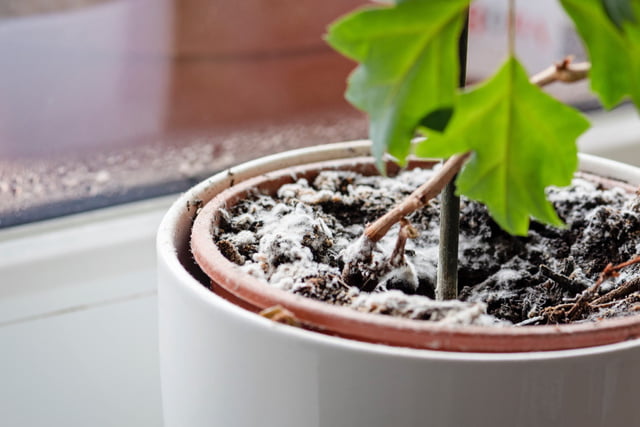Before they can be put in the open ground, some plants need to be grown in advance. How to avoid mold on the growing soil and other mistakes during cultivation, read here.
When growing vegetables, so many things can go wrong: Water, temperature, location, soil: everything must be right for the seeds to germinate and the plants to grow well. Here’s how to prevent common mistakes when it comes to growing soil and the like.
Contents
Growing soil gets moldy: Causes and measures
One of the most common problems with growing is mold. To prevent the growing medium from becoming moldy, you should pay attention to these things:
- Only buy growing soil that has been stored indoors.
- Before you use the potting soil, you can sterilize it as a precaution: Simply heat it in the oven at 120 degrees for about 45 minutes. This will kill fungi and germs.
- Use up growing media quickly after opening. If you store it, only do so indoors.
- Thoroughly clean the growing pots from the previous year! Not only remove old soil residues, but also wash them with hot water from vinegar water. This is the only way you can destroy mold spores. You should also clean newly purchased seed trays once as a precaution.
- Remove the cover from your seedlings twice a day to allow fresh air to reach the plants and soil for at least an hour. Once the seeds have germinated, you no longer need a cover.
- Avoid waterlogging at all costs.
- A little sand on the growing soil can inhibit mold growth.
- If mold has already formed, you should remove the cover. Depending on how vigorous your seedling is already, you can remove it from the soil. Remove any soil that sticks to it as best you can. Empty the pots and wash them out with hot water and vinegar water. Then fill them with new soil.
Seeds do not germinate
In order for the seeds to germinate, you should consider a few things in advance. Create optimal needs for your plants. Keep in mind that each plant has different requirements:
Is the plant you want to sprout light or dark germinators? For light germinators, the seeds only need to be lightly covered with soil; for dark germinators, the seeds go a little deeper into the growing soil.
What is the optimal germination temperature for your plant? For cold germinators, for example, a living room is not a suitable place for growing. In this case, a cool basement room is more suitable.
If your seeds do not germinate, even though all conditions are optimal, it may be because you have kept them too long. This is because they can then lose their ability to germinate.
The water supply must also be right: In order for the seeds to germinate, you need to moisten them regularly. The best way to do this is with a spray bottle, with which you spray a little water into the seed pots a few times a day.
Seedlings die
Every now and then it happens that the seeds sprout and grow, but then the seedlings die or simply stop growing. This is not always a problem. It can also be that the roots of the seedlings are growing and therefore the progress is simply not visible.
However, if nothing happens for a long time or the seedlings even start to die, you should act. You may be supplying the seedlings with too much or too little water, or they may not have enough space and nutrients. Therefore, you should do the following:
Check if you are giving your seedlings the right amount of water (Is the soil often dry, very moist or does the water even accumulate?) Adjust the amount of water if necessary: The growing soil should not be dry, but it should not be soaked in water either.
Repot your seedlings into larger pots or outdoors (provided the time is right).
In the larger pots, you can switch from growing soil to conventional soil. This usually already contains fertilizer.
At the latest, when the roots of the seedling can be seen at the bottom of the growing pot, it must be placed in a larger pot.
Seedling yellowing
Hurry growth or yellowing is when the seedlings grow in height, but do not become thicker and stronger. The reason for this can be lack of light and/or too much heat.
Therefore, when growing your seedlings, make sure that you place them in a bright but not too warm place.
If your seedlings have already grown tall and thin, you should repot them and prick them out as soon as the second pair of leaves has emerged.
Pests during cultivation
Of course, pest infestation can already occur during cultivation, for example, fungus gnats. To prevent such pests from entering your home with the growing soil, you should heat the soil in the oven (45 minutes at 120 degrees) before using it.
If pests have already settled in your growing pots, see these articles for tips on how to get rid of them:


